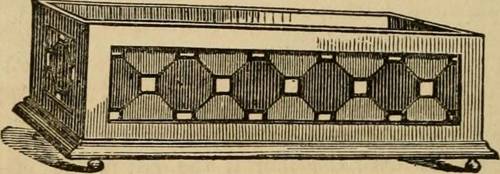
FAQ About Indoor Plant Survival During Power Outages

How can I keep my indoor plants alive during a power outage?
To keep indoor plants alive during a power outage, focus on maintaining their light, temperature, and humidity needs. Place plants near windows to maximize natural light, use insulating materials like blankets to moderate temperatures, and group plants close together to help maintain humidity levels. Regularly monitor the plants for any signs of stress.

What are some temporary lighting solutions for plants during outages?
During power outages, the best temporary lighting solution is to place your plants near windows to take advantage of natural light. If natural light is insufficient, you could use battery-operated LED grow lights, but these may not be as effective as standard grow lights.

How does a power outage affect the temperature for indoor plants?
Power outages can cause indoor temperatures to drop or rise, depending on the season. Both temperature extremes can stress plants. In cooler weather, try to insulate the plants by wrapping pots and placing them together. During hot weather, keep blinds or curtains closed to prevent excessive heat buildup.

How can I maintain humidity levels for my plants without power?
To maintain humidity without power, you can place a few shallow trays of water around your plants to increase the moisture in the air. You might also consider misting your plants regularly, but be aware that this is a short-term solution and might not be suitable for all plant types.

Is it safe to leave plants near windows during a power outage?
Yes, it is generally safe to place plants near windows to maximize natural light intake during a power outage. However, be cautious of potential drafts and sudden temperature changes near windows, which can harm sensitive plants. Curtains or blinds can help manage these risks.

What can I do to prepare my plants for a power outage in winter?
To prepare for a winter power outage, move plants to a location in your home where they can receive the most natural light, and away from drafts. Consider using insulating materials like bubble wrap or move plants to the warmest parts of your home. Grouping plants together can also help maintain a warmer microclimate.

Can closing blinds or curtains help during a power outage?
Yes, closing blinds or curtains can help stabilize indoor temperatures by reducing heat loss during cold weather and minimizing heat gain on sunny days. This will help create a more stable environment for your indoor plants.

Are there any indoor plants that are more resilient during outages?
Certain indoor plants are naturally more resilient to changes in light and temperature. These include plants like Zamioculcas zamiifolia (ZZ Plant), Sansevieria (Snake Plant), and Aglaonema (Chinese Evergreen), which can tolerate lower light levels and fluctuating temperatures better than others.

How often should I water my plants during a power outage?
The watering schedule may vary based on plant type and environmental conditions. Generally, reduce watering if temperatures are cooler, as plants will not dry out as quickly. For warmer conditions, check the soil moisture regularly and water as needed to avoid drying out.

What should I avoid doing with my plants during a power outage?
Avoid moving plants frequently and placing them in direct cold drafts or overheating conditions. Do not overwater as plant metabolism may slow down due to reduced light and temperature. Also, avoid fertilizing, as plants under stress don't utilize nutrients efficiently.

How long can plants survive without power?
The survival time for plants during a power outage depends on the species and environmental conditions. Some resilient species might survive for several days or even weeks with little light and fluctuating temperatures, while others may start to show stress within a few days.

Do all plants require light immediately after power outage?
Most plants need light within a day or two to minimize stress, but the immediate requirement varies. Low-light tolerant plants can withstand reduced light conditions for longer periods compared to high-light plants, which might require immediate relocation to brighter areas.

How can I use blankets or sheets to protect plants?
Blankets or sheets can be used to insulate plants during power outages. Covering plants with these materials helps retain heat during cold temperatures. However, avoid covering leaves directly for extended periods to prevent mold or mildew. Ensure air circulation remains adequate.

Is humidity more important than temperature for plant survival?
Both humidity and temperature are vital; however, the importance varies based on the plant species. Some tropical plants prioritize humidity, while others might be more affected by temperature changes. Understanding the needs of specific plants can aid in better preparation during outages.

Can I use a fireplace to heat the room with my plants?
Using a fireplace can provide warmth during a power outage, but ensure plants are not placed too close to avoid heat damage or smoke exposure. Maintain a safe distance and monitor plant conditions, as excessive dry heat can be harmful.

What should I do if my plants show stress signs during an outage?
If plants show stress signs such as wilting, leaf drop, or discoloration, adjust their environment. Ensure they receive adequate light, temperature moderation, and humidity. Remove any dead or damaged foliage and avoid further stresses like repotting or fertilizing.

Are battery-powered heaters effective for plants during outages?
Battery-powered heaters can be effective in small spaces but may not significantly raise room temperature for large areas. They are useful for maintaining minimal warmth. Use them cautiously, keeping in mind their limitations and battery life.

How can I create a microclimate for my plants?
To create a microclimate, group plants together in a room where they can share humidity and warmth. Consider using bubble wrap on windows to retain heat, and place water-filled trays nearby to increase humidity. This approach can offer a more stable environment for your plants.

What is the role of mulch in protecting indoor plants during outages?
Mulch can help regulate soil temperature and moisture levels by keeping the soil cooler in summer and warmer in winter. It also reduces water loss, which can be beneficial during outages when environmental conditions are fluctuating.

Should I relocate my plants during a long-term outage?
If the power outage is expected to last for an extended period, consider relocating your plants to areas with more natural light and stable temperatures. Ensure these locations are free from drafts or excessive heat and allow plants to recover from stress.
